Bear 71 VR
Produced by the National Film Board of Canada in collaboration with Google, IDFA Doclab, and Sound and Vision
2017
The National Film Board of Canada (NFB) is making groundbreaking, immersive virtual reality experiences more accessible than ever―starting with a VR reinvention of the NFB’s multi-award-winning interactive doc, Bear 71, now available free on Chrome as Bear 71 VR.
Originally launched in 2012, Bear 71 is an acclaimed interactive multi-user online experience told from the point of view of an omniscient female grizzly bear―dubbed “Bear 71” by the park rangers who track her. Created by Jeremy Mendes, Leanne Allison and the NFB, Bear 71 explores how we coexist with wildlife in the age of networks, surveillance, and digital information.
Developed using open platform WebVR technology for greater accessibility, Bear 71 VR is now available using a Daydream-ready phone such as Pixel and Daydream View, and can also be viewed as a 2D interactive experience. It will soon be available in additional VR headsets as WebVR support expands further in Chrome and other major web browsers.
Created in collaboration with Google’s Chrome and VR teams, IDFA DocLab and Sound and Vision, Bear 71 VR has been showcased as a VR installation by the NFB at IDFA Doclab and by Google at the New Frontiers VR Bar at this year’s Sundance Film Festival. It now joins such acclaimed NFB VR works as the Webby Award-winners The Unknown Photographer (Turbulent/NFB), Way to Go (NFB/France Télévisions) and Cardboard Crash (NFB).
Trailer
About Bear 71
Bear 71 is the true story of a female grizzly bear monitored by the wildlife conservation offices from 2001 – 2009.
She lived her life under near constant surveillance and was continually stressed by the interactions with the human world. She was tracked and logged as data, reflecting the way we have to see the world around us through Tron and Matrix-like filters, qualifying and quantifying everything, rather than experiencing and interacting.
Leann Allison sifted through thousands of photos from motion-triggered cameras from this project. The grainy images gathered over the past 10 years by various scientists reveal the hidden life of the forest, played out by the animals and humans – including Bear 71 – captured covertly on film.
Bear 71’s story is consistently played out in places all over the globe where humans and wildlife intersect – from cougars in Nova Scotia to Bears in suburban Vancouver to bear culls in New Jersey.
It highlights how our growing dependence on technology divorces us from nature, even while allowing us to keep closer tabs on it. It raises questions about how we view nature, how we view ourselves in relation to technology and nature, and the nature and validity of surveillance both in the wild, and within human society.
Chances are, your picture gets taken dozens of times a day without you really knowing it. This type of surveillance is done so that you don’t steal gas, steal a car, or steal a kiss.
Life was not so different for this bear. She was trapped, collared, and given a number at the age of 3.
For 11 years, she suppressed her natural instincts, and survived in a maze of roads, towns, trains, tourists, and a barrage of tempting smells she had to learn to ignore.
Bear 71 reimagines the bear’s story from an omniscient narrative vantage point. She speaks directly to us, and her insight forms a bridge between millions of years of evolution in the wild, and a few decades of technological advances that have infiltrated nearly every part of our lives.
She’s still wild, and still speaks the language of the forest, writing her story on the trees.
At the same time, she can take stock of the various technologies that affect her, and critically assess human efforts to “manage” wildlife in an area where grizzly bears are barely hanging on.
Turning the lens of technology on itself, Bear 71 examines the story of the bear through the digital interactive medium, creating a vivid technological interpretation of nature for us to explore, and for the bear to inhabit as she tells her story.
We’re watching her. She’s watching us. And at the same time, we’re watching ourselves.
In the words of the bear, “Sometimes it’s hard to say where the wired world ends and the wild one begins.”
A critically acclaimed site, Bear 71 launched as a flash site in 2012 by the National Film Board of Canada Digital Studio (bear71.nfb.ca).
Since then, Bear 71 has been awarded a Gold Cyber Lion Award from the Cannes Lions International Advertising Festival in the category of Charities, Public Health & Safety and Public Awareness Messages and was received the 2013 Webby Award for best net art in addition to many other awards
With the deprecation of Flash browser support, the NFB sought to maintain the legacy of this award winning project, while simultaneously exploring how to innovate on the story on a new platform – in this case, WebVR.
Why WebVR in general and why and Bear 71 in WebVR:
- We support the open and democratic web being a public institution funded by the public. We believe that open web standards allows everyone to enjoy our content and be able to create content as well to express themselves.
- WebVR is a great example of how we can innovate what the web can do and still keep this progress accessible to everyone.
- Bear 71 is a landmark interactive documentary that is set in a 3D world like many of our projects and lends itself well to WebVR especially when we’re at a time when preserving digital content is a challenge.
Where Bear 71 Came From By Leanne Allison
We’ve all heard of the ‘elevator pitch’- a thirty second sell of a project idea to prospective producers. This is a story about one that worked and went on to become a National Film Board high-profile interactive documentary called Bear 71.
The pitch literally took place in an elevator, as I walked for coffee with Rob McLaughlin, who was then head of the digital program at the NFB. After showing him only a dozen or so trail cam photos and explaining where they came from he paused for a moment, looked at me and said, “you’ve got a winner here Leanne. Good work”.
I told that story recently to Jeremy Mendes (co-creator of Bear 71) and asked him if he thought I’d have even been able to access Rob that day if it weren’t for my previous NFB film, Being Caribou. Jeremy said, ‘if it weren’t for Being Caribou you wouldn’t have seen there was story in all those images in the first place’. He’s right of course, but it wasn’t until then, that I connected the dots myself.
Being Caribou is about a journey my husband, Karsten Heuer and I did in 2003, where we followed a herd of 123,000 caribou on foot during their annual migration from the central Yukon to the Alaska coast and back. What made the trip unique was that we couldn’t have a route plan; everything was left up to the caribou, including where we went and for how long. During the five-month journey we didn’t cross a single road or pipeline and only encountered a handful of people. We were constantly in the presence of wild animals, like wolves, wolverines, musk ox, eagles and foxes because the caribou tow an entire ecosystem with them on their migration. This immersion in an ancient animal rhythm made us wake up to an old way of being human. We started to dream about where we would see caribou next and we used a sound Karsten describes as ‘thrumming’ in his book about the trip, to guide us. It was something you felt more than you heard, and yet we trust this new sense, and it worked. Reconciling that world we discovered with the caribou and the busy modern world we have since returned to has been difficult. In a way, we’re always searching for a way back to what we discovered with the caribou.
Not long after that trip, we started a family and when our son Zev was 2 ½ it was time for another adventure. This time it was inspired by stories, some of them written a half century ago by one of Canada’s most famous writers, Farley Mowat. It was another 5-month journey that took us canoeing and sailing across Canada through the settings of some of Farley Mowat’s most famous stories. Sure enough we found his stories intact and still connected to the landscapes they were written in, making us wonder if we really write these stories, or if they’ve been there all along and ‘release’ themselves to those who take the time to notice them.
While the Finding Farley film was having its debut on the festival circuit, I was starting to wonder what the next project was going to be. Some interactive projects were circulating at the NFB and one in particular made a big impression on me. Jonathan Harris’s The Whale Hunt is a photographic experiment in storytelling that allows the user to sift through his 5000 photographs of a whale hunt from any perspective they want- even the whales. After seeing this, the light bulb went off, and I knew I had a home for the thousands and thousands of trail cam photos taken for research purposes where I live in the Bow Valley of Alberta. I’d known about the photos for several years and had always been fascinated by them, but I knew they’d never hold up to the big screen since the images are very low resolution. This was a small screen project perfect, for interactive web-based media.
I spent a few months poring through thousands of photos trying to figure out what the story was going to be about. After any given session spent behind my computer looking through hundreds of images of wildlife I’d look out my window and see where I live in a completely different way. I could imagine a cougar slinking by just a kilometer from my house, a wolf pack on a kill a valley or two away, or a grizzly bear scratching himself on a rub tree on a popular hiking trail just outside the town of Banff. The photographs showed me a world of animals, the same world we knew amongst the caribou, only now it was right in my backyard!
Right around this time Jeremy Mendes, a digital media creator at the NFB, offered to come on board the project to help me translate the story to an interactive platform. He, too, was excited about the potential of the grainy photos of wild animals taken with no one behind the camera, but what struck him was how much they looked like the surveillance photos taken of us everyday at bank machines and 7-11 stores. And wasn’t it odd that we were looking at nature through the same lens?
That was when, Bear 71 became a story, not only about a grizzly bear, but about how much we rely on technology, not only to relate to each other, but also to the natural world. From that point onwards, many hours were poured into the project by many talented people, to create the digital world of Bear 71, the interactivity, the script, the voice over of Bear 71, the sound design, and everything else.
For me, Bear 71 is first and foremost a tragedy about an incredible mother grizzly bear who learns to navigate the maze of development in the Bow Valley only to be struck dead by a train. Secondly, it is a critique of technology, via technology, highlighting how our reliance on it comes at a cost. We get further and further from our instincts, we forget about the thrumming, and our world becomes bound by computer screens instead of unbound by the sky above our heads. I’m lucky enough to know what I’m missing while sitting in front of this computer. After watching Bear 71
I’m hopeful so will you.
Team
Leanne Allison
Director
Photo
Photo : Rachel Boekel
Jeremy Mendes
Co-Creator
Photo
Dana Dansereau
Producer (NFB)
Photo
Photo : Emily Cooper
Rob McLaughlin
Producer
Photo
Loc Dao
Executive Producer
Photo
Janine Steele
Producer
Photo
Bonnie Thompson
Producer (NFB)
Photo
Photo : Debbie Boccabella
Clip
Images
Loading...
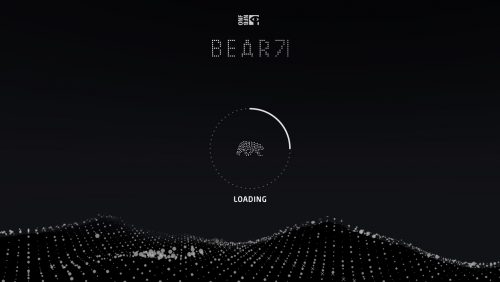
Download
Loading...
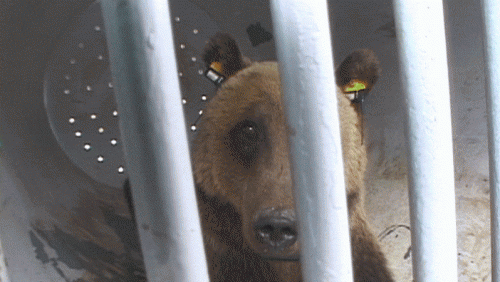
Download
Loading...
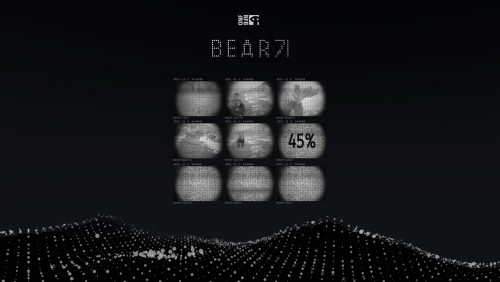
Download
Loading...
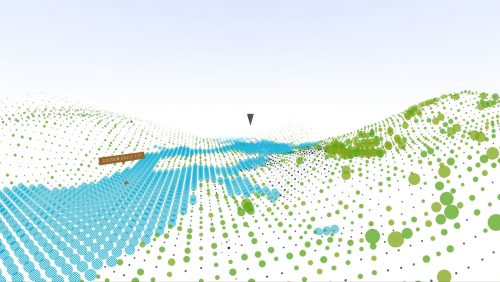
Download
Loading...
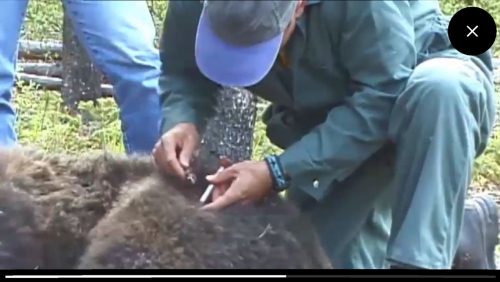
Download
Loading...
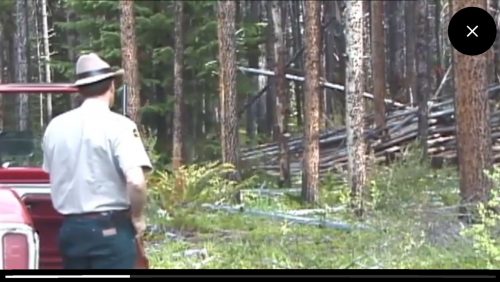
Download
Loading...
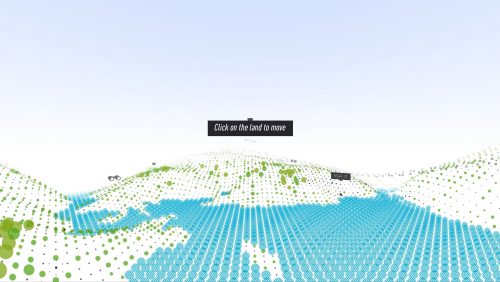
Download
Credits
Co-Creators
Leanne Allison
Jeremy Mendes
Bear 71 Voice
Mia Kirshner
Producers
Loc Dao
Bonnie Thompson
Dana Dansereau
Rob McLaughlin
Janine Steele
Executive Producers
Loc Dao
Rob McLaughlin
David Christensen
Written by
JB MacKinnon
Editor
Jennifer Moss
Produced in partnership with
Google
Commissioned by
IDFA Doclab
in collaboration with
Sound and Vision
Interactive Design, Development and Programming
Jam3
Executive Creative Director
Pablo Vio
Creative Director
Dirk Van Ginkel
Technical Director
Aaron Morris
Developers
Tomasz Dysinksi
Matt DesLaurier
Arturo Paracuelos
Gauthier Pompougnac
Wenchen Li
Designers (VR)
Steven Mengin
Pedro Barroso
Executive Producer
Michael Dobell
Producer
Ben McEvoy
Design (Original – Web)
Aubyn Freybe-Smith
Sound Designer
Joshua Stevenson
Video Editor
Bill Hardman
Hart Snider
Music Consultant
Jonathan Orr
Wordmark Design
Patrick Johnson
Social Story Design/Installation Co-Creator
Lance Weiler
FOR THE NFB
Associate Creative Technologist
Vincent McCurley
Project Managers
Laura Mitchell
Vanessa Fukuyama
Centre Administrators
Darin Clausen
Carla Jones
Production Coordinators
Faye Yoneda
Ginette D’Silva
Jennifer Roworth
Teri Snelgrove
Jasmine Pullukatt
Marketing
Tammy Peddle
Publicist
Jennifer Mair
Social Media
Kathryn Ruscito
System Administrators
Sergiu Raul Sucio
Bruno Gervasi
Legal Services
Christian Pitchen
Trail camera images
Parks Canada
Alberta Provincial Parks
Montana State University
Stills Photography
Graeme Pole / Mountain Vision
Additional Footage
Alex Taylor
Leanne Allison
“Bloom”
Written by Thomas Edward Yorke, Jonathan Richard Guy Greenwood, Colin Charles Greenwood, Edward John O’Brien, and Philip James Selway
Performed by Radiohead
Reproduced with Permission from Warner Chapell Music Canada and Beggars Group Media
“Zone 4”
Written by Cooper Crain
Performed by Bitchin’ Bajas
Reproduced with Permission from Cooper Crain
“Patchwork”
Written and Performed by Laurie Spiegel
Courtesy of Laurie Spiegel/ Laurie Spiegel Publishing
ASCAP
“Chimeras”
Written and Performed by Tim Hecker
Published by Tim Hecker (SOCAN)
Appears Courtesy of Kranky, Ltd.
“Sheets Two”
Composed by Brendon Anderegg and Koen Holtkamp
Performed by Mountains
From the Album Choral
Reproduced with Permission from Thrill Jockey Records
“White Oak White Pine”
Written by Per Henrik Svalastog
Performed by Svalastog
Courtesy of Rune Grammofon
“Minuet for a Cheap Piano”
Written by Adam Wiltzie & Dustin O’Halloran
Performed by Winged Victory for the Sullen
Reproduced with Permission from Kranky, Ltd. & Erased Tapes
“Dragging the Streets”
Written by Liz Harris
Performed by Grouper
Licensed Courtesy of Liz Harris
“Alien Observer”
Written by Liz Harris
Performed by Grouper
Licensed Courtesy of Liz Harris
“Midnight On Princess”
Written by Scott Morgan
Performed by Loscil
Licensed Courtesy of Ghostly International

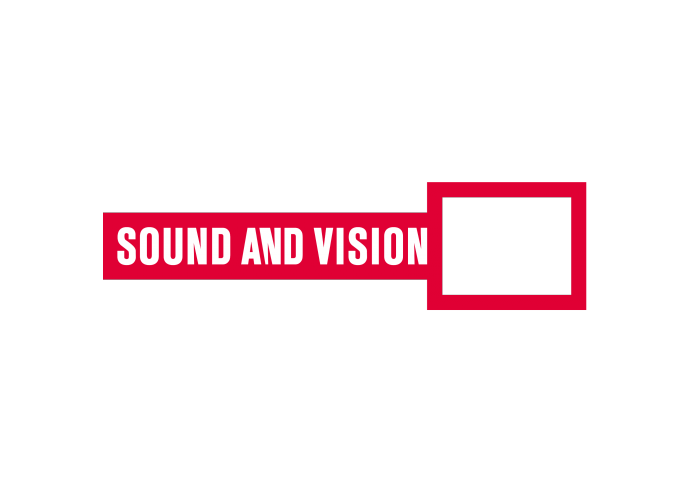
Media Relations
-
About the NFB
The National Film Board of Canada (NFB) is one of the world’s leading digital content hubs, creating groundbreaking interactive documentaries and animation, mobile content, installations and participatory experiences. NFB interactive productions and digital platforms have won over 100 awards, including 21 Webbys. To access this unique content, visit NFB.ca.